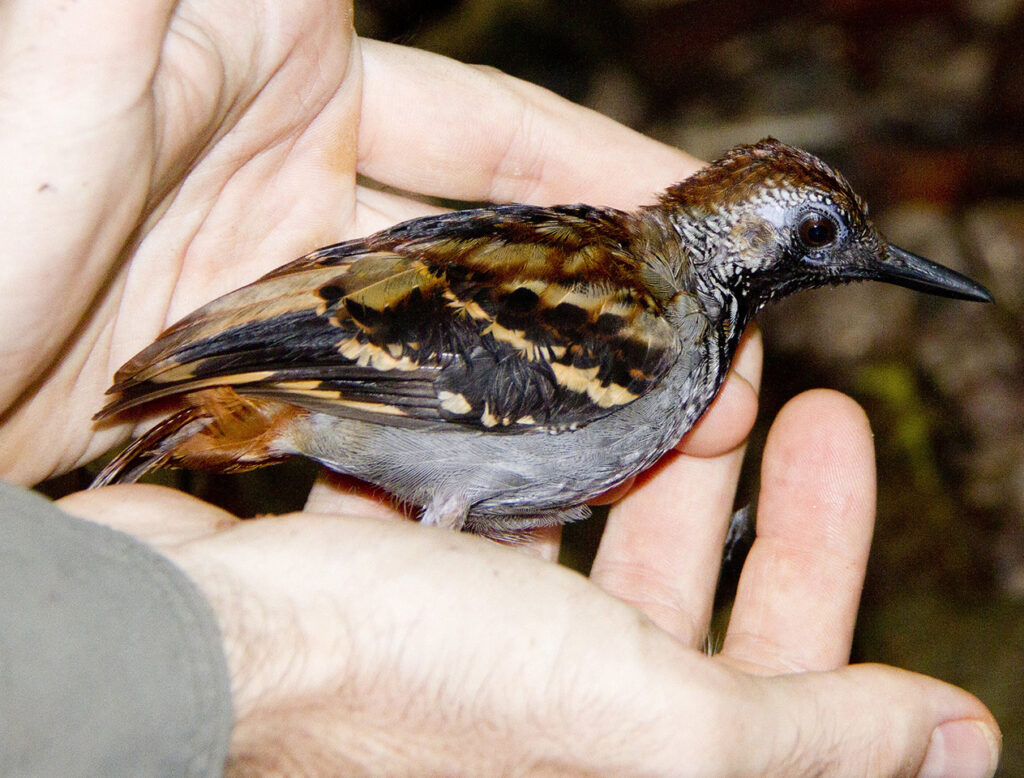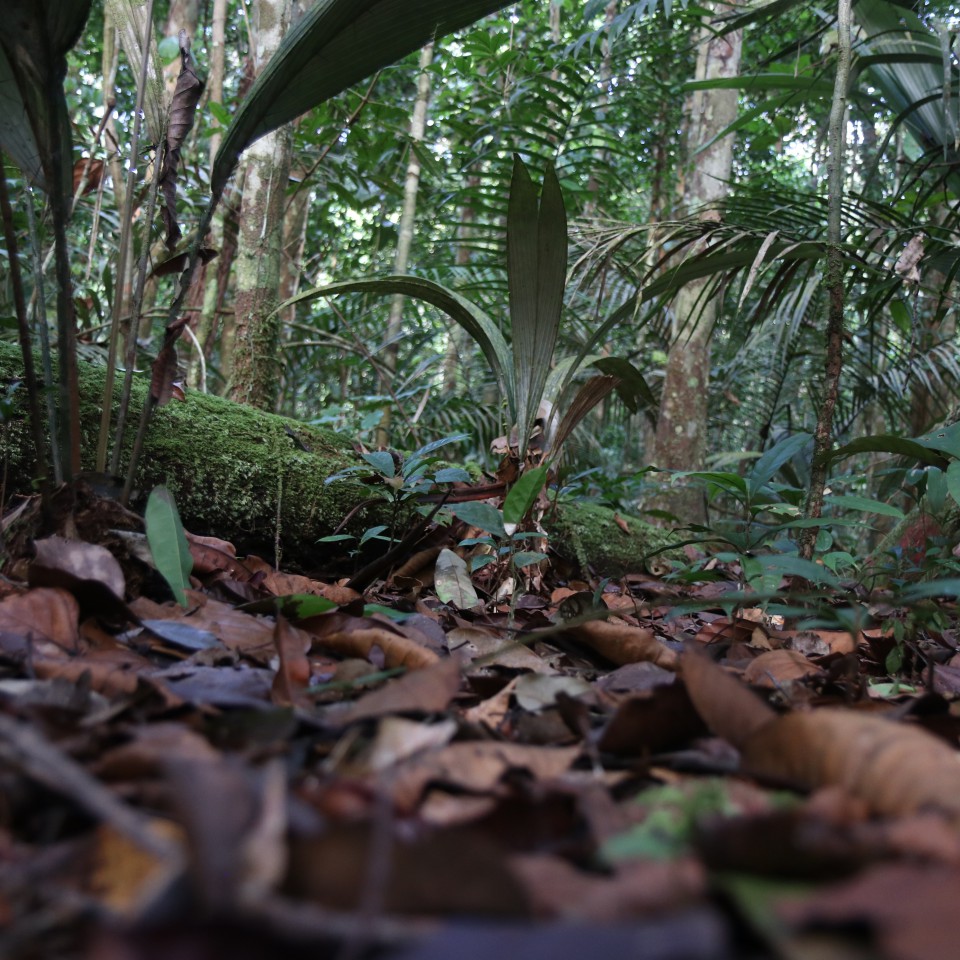By Philip Stouffer
After a field season netting birds in Amazonian rainforest fragments and second growth, Louisiana State University (LSU) Ph.D. candidate Erik Johnson was excited to work in undisturbed forest for his 2008 field season. Within a few weeks, he had seen many of the specialist birds absent from the disturbed landscape. But some, like the Black-tailed Leaftosser (Sclerurus caudacutus), continued to elude him. As we mused about this in our camp at the Biological Dynamics of Forest Fragments Project, I remembered that these birds had been easier to find when I first arrived in the Amazon 17 years earlier. Was that just nostalgia? We pondered this question for leaftossers and other terrestrial insectivores that seemed unexpectedly rare, even as most of our research was focused on understanding how rainforest birds responded to abandoned pastures that were regenerating back into forest.
Over the next eight years, Erik finished his Ph.D., new cohorts of students continued the work, and we accumulated additional samples from continuous forest. Finally, with analysis spearheaded by LSU students Vitek Jirinec and Cameron Rutt, we were able to answer the question that arose in 2008. Yes, compared to the early 1980s, a suite of about 20 terrestrial and near-ground birds are now much less common in undisturbed forest. We knew these birds were vulnerable to landscape change, but the new results show declines to be occurring in the absence of any obvious driver. These birds are permanent residents of the vast Amazon rainforest, beyond the reach of habitat loss, perils of migration, disease, introduced species, or other common threats to birds. We are seeing losses in one of the few places on Earth that we want to believe remains a secure repository of biodiversity. At this point, we don’t know how pervasive these hidden losses might be, but similar trends have been reported from the Ecuadorian Amazon. While we can’t ascribe a specific mechanism, climate change has led to hotter and drier dry seasons and forest structural change in the central Amazon, perhaps with consequences for habitat suitability or food resources in the lowest stratum of the rainforest.
These losses from undisturbed forest change how we view the reestablishment of bird communities in regrowth forest. Unfortunately, birds in regrowth forests can recover only to their current abundance levels in undisturbed forest. We see a shifting baseline—today’s “undisturbed” forest is not the same as it was in the early 1980s, and regrowth can only reach that new normal. The losers are terrestrial and near-ground insectivores, but there are also winners in the system. Midstory frugivores, including some manakins, are now more common in undisturbed forest than they had been, and also do well in regenerating forest.
Although our news is discouraging, perhaps it can prompt other researchers with long-term data from pristine sites to evaluate long-term trends. We won’t know what’s been lost until we look.



I worked and participated in the BDFF Project doing bird banding from May 1985 to November 1985 and stayed a few additional months to work on another project. I have always been interested in following any reports related to this project and this location. I realize that it might not be statistically easy to use data input into eBird, but while I worked on the BDFF sites, I did make a daily species list for all the birds for almost every day that I was in the field and have entered nearly all of my sightings into eBird for the time that I spent there. My lists included all birds that I encountered, seen and heard, while working in the forest, not only the ones that I banded during the mist netting. I became quite familiar with the songs and calls of nearly all the birds during my stay there. I returned to my native Massachusetts after my time at BDFF and subsequently did environmental work for the state for 30 years before retiring 6 years ago. Over those 30 years, I did return to Brazil several times during vacations for birding in other states in Brasil. I did stop into Manaus in 2013 on one of my trips and had lunch with Mario Cohn-Haft, whom I had met at LSU while visiting another BDFF alumnus, John Bates, who was working at the time on his PhD in Baton Rouge.